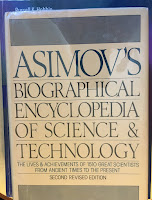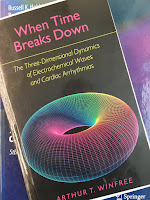A Dangerous Error in the Dilution of 25 Percent Albumin
To the Editor: Physicians and pharmacists should be alert to a serious error that can occur in the preparation of replacement albumin solutions for plasmapheresis.This letter makes the distinction between osmotic pressure and oncotic pressure, that part of the osmotic pressure caused by large colloidal particles such as albumin.
Plasmapheresis was performed in an elderly man who had myeloma with renal insufficiency. One plasma volume exchange was ordered, with 5 percent albumin as the replacement solution, with calcium, potassium, and magnesium supplements. Because of the lack of availability of 5 percent albumin, the hospital pharmacy used 25 percent albumin and diluted this solution 1:4 with sterile water to achieve a 5 percent solution. Reference was made to Trissel’s Handbook on Injectable Drugs, the 1994 edition of which states, “A 5% solution may be prepared from the 25% product by adding 1 volume of the 25% albumin to 4 volumes of sterile water or an infusion solution such as dextrose 5% in water or sodium chloride 0.9%.” The pharmacist used sterile water as described by the handbook, resulting in a hypo-osmolar solution that caused severe hemolysis in the patient. The hematocrit dropped 7.3 points, and renal failure developed.
This flagrant error in instructing dilution with water was only partially corrected in the 1996 edition of Trissel's handbook. This edition states, “If sterile water for injection is the diluent, the tonicity of the diluted solution must be considered. Substantial reduction in tonicity creates the potential for hemolysis.” In view of the osmolarity of the 25 percent albumin solution diluted with sterile water (approximately 36 mOsm per liter), one should never use water to dilute 25 percent albumin.
The problem is aggravated by the label on the 25 percent albumin solution. The label states that 100 ml of 25 percent albumin is “osmotically equivalent to 500 ml of plasma.” This statement is not true. It confuses the osmotic and oncotic effects. The oncotic effect of 100 ml of the 25 percent solution is equivalent to 500 ml of plasma, but since the concentration of saline in the 25 percent solution is isotonic with plasma, the osmotic effect of 100 ml of the 25 percent is equivalent to only 100 ml of plasma.
The handbook and product label need to be corrected as soon as possible to prevent this error in the future. Pharmacies and the medical community should be alert to this potentially life-threatening error.
Before publication, the editor sent the letter to experts at the FDA, who responded with a separate letter that immediately followed Steinmuller’s
…Including the case reported by Dr. Steinmuller, the FDA is aware of four cases of hemolysis that have occurred since 1994 during or after plasmapheresis when albumin (human) 25 percent was diluted to a 5 percent solution with the use of sterile water for injection…. The FDA has taken the following steps to advise the medical community of this potentially serious problem. First, the FDA is recommending to manufacturers of albumin (human) 25 percent that the package inserts for their products be revised to include … information on acceptable diluents, such as 0.9 percent sodium chloride or 5 percent dextrose in water…The FDA letter triggered a third letter from Richard Kravath, of Kings County Hospital Center in Brooklyn
…Although the response by the representatives of the Food and Drug Administration (FDA) is correct with regard to the recommendation that dilution with 5 percent glucose, instead of water alone, would prevent hemolysis, use of this solution would not prevent the possible development of hyponatremia and brain swelling if the solution were used rapidly in large volumes, as in plasma exchange. Owing to its oncotic pressure, the albumin would tend to remain in the plasma compartment, whereas the glucose would rapidly leave the circulation, enter the interstitial fluid and then enter cells, become metabolized, and no longer exert an osmotic effect….The authors of the handbook quoted by Steinmuller also wrote a letter, in which they quoted the corrected 9th edition of their book (Steinmuller had cited the 8th edition) and claimed (somewhat lamely, in my opinion) that “…It is common knowledge that large volumes of very hypotonic solutions should not be administered intravenously….” and “…This situation points to the need for health care practitioners to use up-to-date references...”.
Glucose solutions should not be used to replace plasma or other extracellular fluids. Sodium chloride 0.9 percent (154 mmol per liter) is a reasonable alternative, but a more physiologic solution, one that more closely resembles plasma, would be even better.
Finally, the FDA experts responded to these last two letters.
…Plasma exchange or plasmapheresis represents a unique circumstance because, in formulating the replacement solution, one must take into account not only the loss of endogenous plasma proteins (principally, but not exclusively, albumin) but also the fact that significant quantities of electrolytes such as sodium and chloride are being removed by the procedure...This exchange of letters is fascinating, and emphasizes the importance of the osmotic effects that Russ and I discuss in Chapter 5. The original letter by Steinmuller, which highlights an important medical issue, also makes for an instructive homework problem.
Let me conclude by noting an error (now listed in the book errata, downloadable at the book website) in the 4th edition of Intermediate Physics for Medicine and Biology. Russ and I have the title of Steimnuller’s letter incorrect. On page 133 we write “15 percent” when the title of the letter actually says “25 percent”. The homework problem correctly uses 25 %, and needs no change. Below is the corrected citation:
Steinmuller, D. R. (1998) “A Dangerous Error in the Dilution of 25 Percent Albumin,” New England Journal of Medicine, Volume 338, Page 1226.









